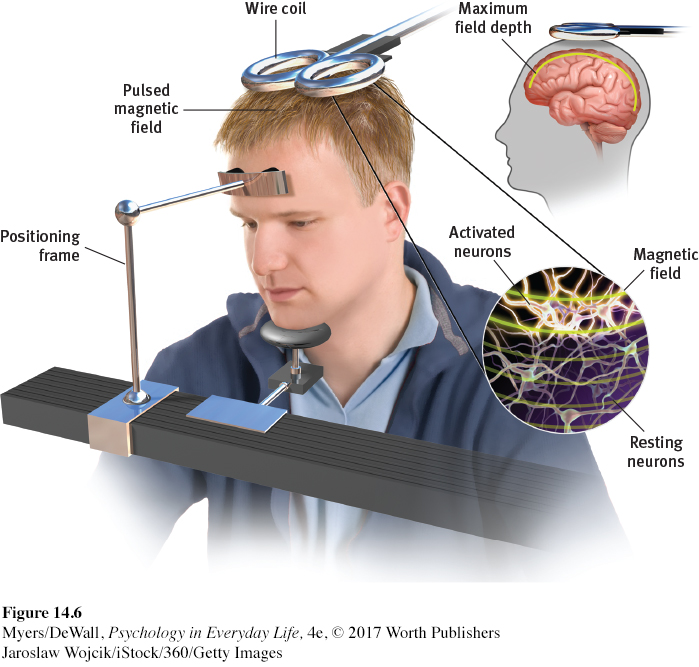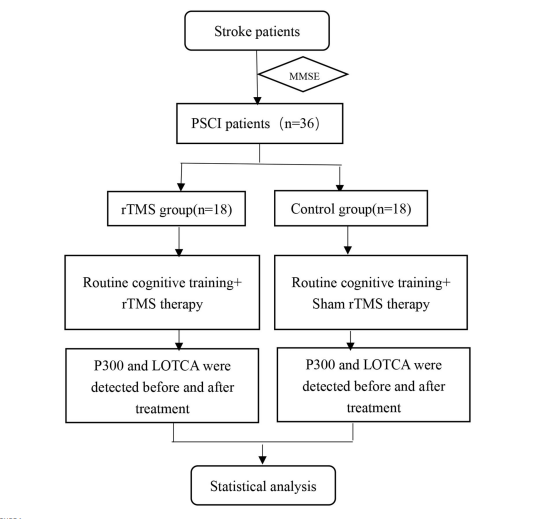A study entitled “Cerebral activity manipulation of low-frequency repetitive transcranial magnetic stimulation in post-stroke patients with cognitive impairment” conductted by Yingli , Gong Zunke , Chen Wei and Wang Shiyan , published 8 November 2022.
Post-stroke cognitive impairment (PSCI) refers to a series of syndromes in which impairment of one cognitive area of executive function, attention, memory, language ability, and visual-spatial ability occurs within 6 months after a stroke.
At present, research focus on the treatment of PSCI is increasing because active and effective treatment can improve cognitive function.
Besides drug therapy, the other conventional treatment method involves non-drug therapy such as cognitive function training, but the effects are limited.
A new research-based intervention is repetitive transcranial magnetic stimulation (rTMS); it is gradually being applied in clinics, which can directly stimulate the cerebral cortex to treat dyskinesia , aphasia, dysphagia , and other dysfunctions after a stroke.
As the therapeutic effects of such PSCI treatments and their mechanisms of action remain unclear, this study evaluated the effect of 8-week exposure to low-frequency rTMS, 5 days per week, on the cognitive function of patients with PSCI.
The therapeutic effect of the treatment was evaluated via a cognitive assessment scale and neurophysiological P300 index.

Objective: #
The aim of this study was to evaluate the therapeutic eect of lowfrequency repetitive transcranial magnetic stimulation (rTMS) on post-stroke cognitive impairment (PSCI
Materials and methods #
Participants
A total of 36 patients with PSCI aged 38–75 years were selected from both Xuzhou Rehabilitation Hospital and the Rehabilitation Department of Xuzhou Central Hospital from September 2018 to June 2020.
The inclusion criteria were as follows: a PSCI diagnosis as per the expert consensus on the management of post-stroke cognitive impairment of 2017 (1); a previous history of stroke that was confirmed by either brain CT or MRI examinations; cognitive impairment of MMSE grade < 24 (junior high school and above)/20 (primary school)/17 (illiteracy); a stroke within the past 6 months
The following were the inclusion criteria:a diagnosis of PSCI in accordance with the 2017 expert consensus on the treatment of post-stroke cognitive impairment , a prior history of stroke that was verified by a brain CT scan or an MRI, MMSE grade 24 (junior high and above)/20 (primary school)/17 (illiteracy) for cognitive impairment, a stroke within the past 6 months.
Study intervention
The patients were divided into either LF-rTMS treatment (n = 18) or control (n = 18) groups using the random number table method. The baseline data, loewenstein occupational therapy cognitive assessment (LOTCA) scales, and P300 waves for patients were obtained prior to the first treatment. In terms of treatments, all patients received routine cognitive training, whereas patients in the LF-rTMS group additionally received 1Hz rTMS stimulations. After 8 weeks, all patients received a second assessment of LOTCA scales and their P300 waves, study application was as the following steps in the figure .

Using a random number table, the patients were split into two groups: LF-rTMS treatment (n = 18) and control (n = 18). Prior to starting the first course of treatment, baseline information, LOTCA scores, and P300 waves for the patients were collected. All patients got standard cognitive training, while those in the LF-rTMS group also received 1Hz rTMS stimulations as part of their therapies. All patients underwent a second evaluation of their P300 waves and LOTCA scales after 8 weeks (Figure 1).
Conclusion #
Low-frequency rTMS improved cognitive function when based on conventional cognitive rehabilitation therapy. It had a defined curative effect and was well tolerated by patients, making it feasible for clinical application. Moreover, no adverse reactions occurred during low-frequency rTMS treatments indicating that the technology is safe and reliable.
Limitations #
The sample size was small, which impeded observation of the impact of rTMS on individual cognitive function. Functional imaging was not used to further
Click here to download the full study
Books specialized in cognitive rehabilitation





